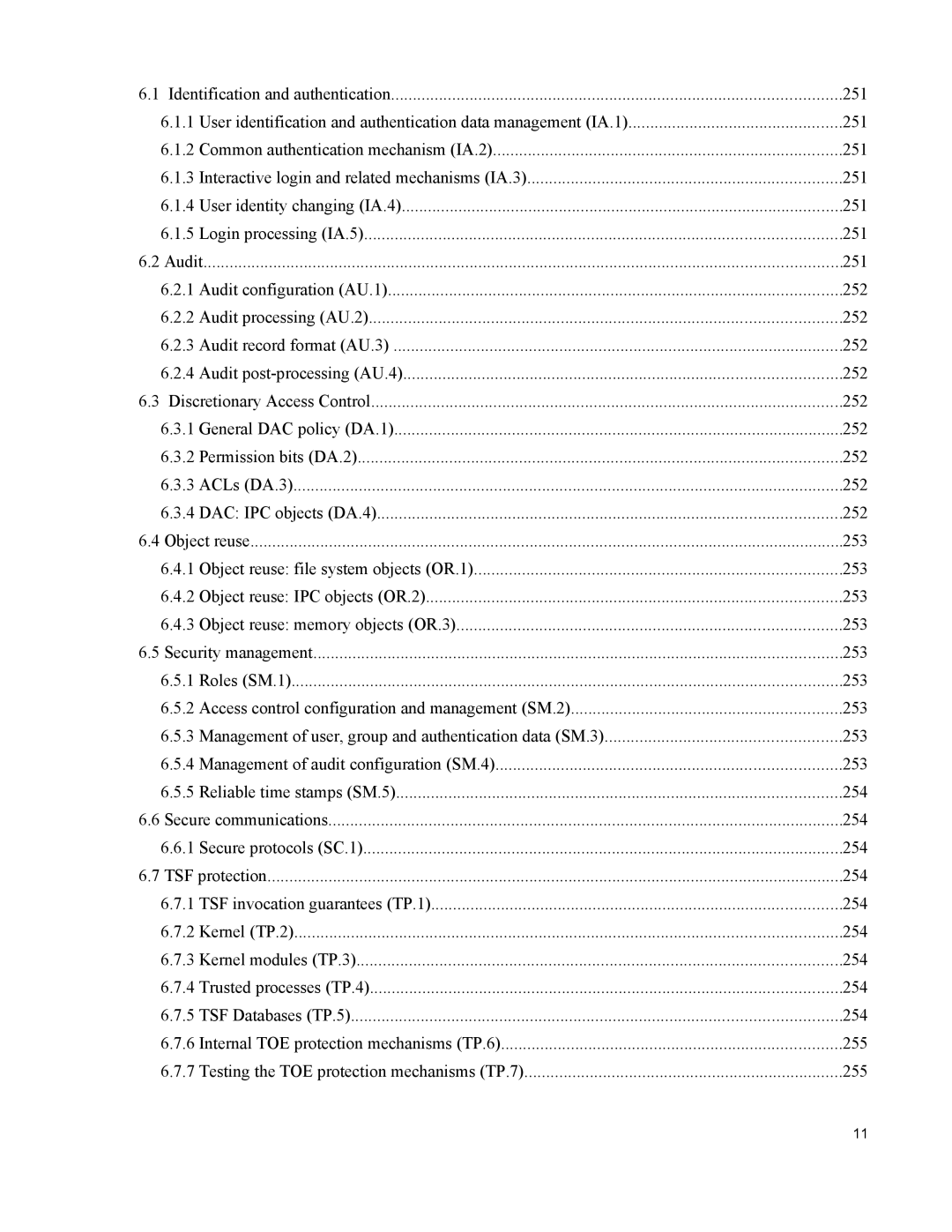6.1 | Identification and authentication | 251 |
| 6.1.1 User identification and authentication data management (IA.1) | 251 |
| 6.1.2 Common authentication mechanism (IA.2) | 251 |
| 6.1.3 Interactive login and related mechanisms (IA.3) | 251 |
| 6.1.4 User identity changing (IA.4) | 251 |
| 6.1.5 Login processing (IA.5) | 251 |
6.2 Audit | 251 | |
| 6.2.1 Audit configuration (AU.1) | 252 |
| 6.2.2 Audit processing (AU.2) | 252 |
| 6.2.3 Audit record format (AU.3) | 252 |
| 6.2.4 Audit | 252 |
6.3 | Discretionary Access Control | 252 |
| 6.3.1 General DAC policy (DA.1) | 252 |
| 6.3.2 Permission bits (DA.2) | 252 |
| 6.3.3 ACLs (DA.3) | 252 |
| 6.3.4 DAC: IPC objects (DA.4) | 252 |
6.4 Object reuse | 253 | |
| 6.4.1 Object reuse: file system objects (OR.1) | 253 |
| 6.4.2 Object reuse: IPC objects (OR.2) | 253 |
| 6.4.3 Object reuse: memory objects (OR.3) | 253 |
6.5 Security management | 253 | |
| 6.5.1 Roles (SM.1) | 253 |
| 6.5.2 Access control configuration and management (SM.2) | 253 |
| 6.5.3 Management of user, group and authentication data (SM.3) | 253 |
| 6.5.4 Management of audit configuration (SM.4) | 253 |
| 6.5.5 Reliable time stamps (SM.5) | 254 |
6.6 Secure communications | 254 | |
| 6.6.1 Secure protocols (SC.1) | 254 |
6.7 TSF protection | 254 | |
| 6.7.1 TSF invocation guarantees (TP.1) | 254 |
| 6.7.2 Kernel (TP.2) | 254 |
| 6.7.3 Kernel modules (TP.3) | 254 |
| 6.7.4 Trusted processes (TP.4) | 254 |
| 6.7.5 TSF Databases (TP.5) | 254 |
| 6.7.6 Internal TOE protection mechanisms (TP.6) | 255 |
| 6.7.7 Testing the TOE protection mechanisms (TP.7) | 255 |
11
